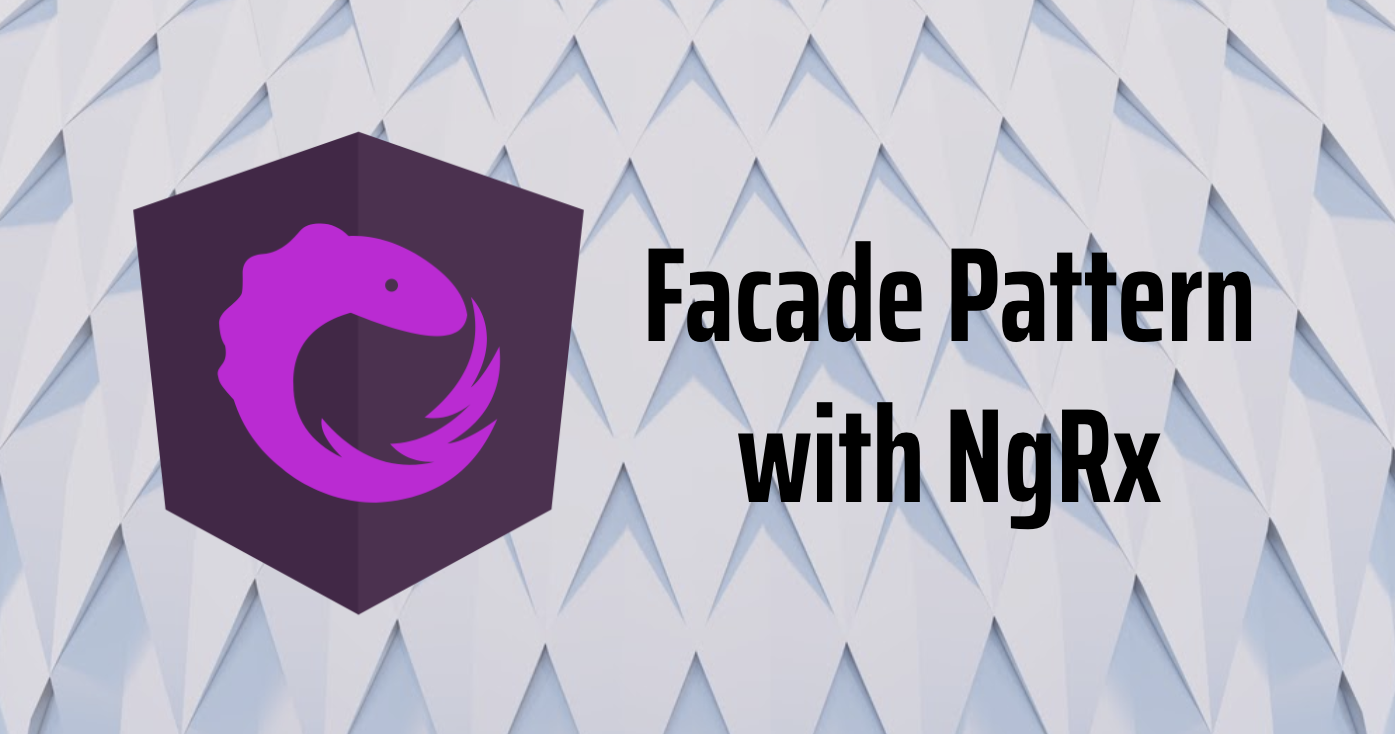The Benefits of Using a Facade Service When Using NGRX
 Jocelyn Knight
Jocelyn Knight
If you've been working with NGRX for some time now, you've probably noticed that it can sometimes get a little messy, especially when dealing with complex state management. That's where facade services come into play. In this article, we'll dive into the benefits of using a facade service when using NGRX and provide some useful code examples to help you understand it better.
1. Simplifying State Management
When you're using NGRX, dealing with the store can become quite tricky, particularly when your application starts to grow. A facade service can help you simplify your state management by providing an abstraction layer between your components and the store.
Instead of dispatching actions and selecting data directly from the store, you'll work with the facade service to interact with the state. This way, you can focus on your component's logic while the facade service handles the store interactions.
For example, let's say you have a simple store with a list of items. Instead of directly selecting the items from the store like this:
this.store.select(state => state.items);
You would create a facade service to handle this interaction:
class ItemsFacade {
constructor(private store: Store) {}
getItems() {
return this.store.select(state => state.items);
}
}
Now, you can simply use the ItemsFacade service to get the items in your component:
class ItemsComponent {
constructor(private itemsFacade: ItemsFacade) {}
ngOnInit() {
this.items$ = this.itemsFacade.getItems();
}
}
You can learn more about NGRX basics from this Beginner's Guide to NGRX.
2. Encapsulating Store Logic
Facade services help you encapsulate store logic, making it easier to maintain and understand. This separation of concerns allows you to keep your components lean and focused on their core functionality, while the facade service handles the store-related logic.
Consider a scenario where you need to dispatch an action to add an item to the list. Instead of dispatching the action directly from the component:
class ItemsComponent {
constructor(private store: Store) {}
addItem(item) {
this.store.dispatch(new AddItem(item));
}
}
You would use the facade service to encapsulate this logic:
class ItemsFacade {
constructor(private store: Store) {}
addItem(item) {
this.store.dispatch(new AddItem(item));
}
}
This way, your components remain focused on presentation and user interactions, while the facade service takes care of the state management.
3. Easier Testing
When you're working with NGRX, testing components that interact with the store can be challenging. By using a facade service, you can isolate the store interactions from your components, making it easier to test them.
Since the facade service is responsible for handling the store logic, you can simply mock it during testing, allowing you to focus on testing your component's functionality without worrying about the store.
4. Improved Code Reusability
Facade services not only simplify your state management but also promote code reusability. By encapsulating store-related logic in a single place, you can easily reuse it across multiple components.
For instance, if you have multiple components that need to interact with the list of items, you can use the same ItemsFacade service to handle the store interactions for all of them. This not only keeps your code DRY (Don't Repeat Yourself) but also makes it easier to maintain and update.
5. Scalability and Maintainability
As your application grows in size and complexity, using facade services with NGRX can significantly improve its scalability and maintainability. By organizing your state management logic in facade services, you can easily extend or modify the functionality of your application without affecting other parts of the codebase.
For example, if you need to add new actions or modify the store's structure, you can do so within the facade service without having to update every component that interacts with the store. This makes it much easier to scale your application and adapt it to changing requirements.
Additionally, by using a facade service, you can minimize the impact of changes to the store on your components. If the store's structure or the way data is accessed changes, you can update the facade service to accommodate these changes, ensuring that your components remain unaffected.
In conclusion, facade services can greatly enhance your experience with NGRX by simplifying state management, encapsulating store logic, making testing easier, improving code reusability, and promoting scalability and maintainability. To learn more about NGRX and get a deeper understanding of how it works, check out this Beginner's Guide to NGRX.
If you're looking for professional assistance with your NGRX projects, don't hesitate to reach out to the experts at bmdevservices.com. They can provide you with invaluable guidance and support to ensure your project's success.
Subscribe to my newsletter
Read articles from Jocelyn Knight directly inside your inbox. Subscribe to the newsletter, and don't miss out.
Written by

Jocelyn Knight
Jocelyn Knight
Hi there! My name is Jocelyn, and I am the owner of B&M Development Services. With over 8 years of experience in web application development, I am a highly skilled Senior Software Engineer with a strong focus on front-end technologies. My expertise lies in Angular, Typescript, RxJs, NGRX, and Akita for state management, as well as Jasmine and Karma for front-end testing. I am passionate about effectively managing state in complex applications and have worked with various state management solutions, including NGRX and Akita. I am also fascinated by the intersection of machine learning and software engineering, and I have experience in AI tool development and prompt engineering. With the potential of LLMs like GPT-4, I believe we are on the cusp of a revolutionary shift in the field. As the owner of B&M Development Services, I have built a custom UI administrative dashboard for managing AI music stations using Angular, NGRX state management, and Angular Material, mixed with custom styling. I also built an internal application for the implementation of proprietary software solutions around artificial intelligence-based music mixdowns. Another project I completed was building a custom remote video consultation solution for CVS using Angular version 10, allowing remote pharmacists to provide legally required medical consultations to patients in remote CVS pharmacy locations. This allowed the client to save a significant amount of the cost of employing a pharmacist in slower CVS locations. At B&M Development Services, we take pride in our ability to deliver high-quality work and help organizations achieve their project goals. Whether it's working on the front-end, back-end, or exploring the possibilities of LLMs, we are committed to staying at the forefront of the industry and contributing to meaningful projects. My expertise also extends to Node.js and Express.js, and I have experience with alternative technologies such as Jest and Hapi.js. I am a problem-solver at heart and am always excited to collaborate with organizations on new and exciting opportunities. Thank you for considering B&M Development Services for your project needs. We look forward to the opportunity to work with you!